This article was medically reviewed by Luba Lee, FNP-BC, MS and by wikiHow staff writer, Megaera Lorenz, PhD. Luba Lee, FNP-BC is a Board-Certified Family Nurse Practitioner (FNP) and educator in Tennessee with over a decade of clinical experience. Luba has certifications in Pediatric Advanced Life Support (PALS), Emergency Medicine, Advanced Cardiac Life Support (ACLS), Team Building, and Critical Care Nursing. She received her Master of Science in Nursing (MSN) from the University of Tennessee in 2006.
There are 15 references cited in this article, which can be found at the bottom of the page.
wikiHow marks an article as reader-approved once it receives enough positive feedback. In this case, 100% of readers who voted found the article helpful, earning it our reader-approved status.
This article has been viewed 136,715 times.
If your heel bone (calcaneus) gets fractured, either due to a traumatic injury or as a result of chronic overuse or repetitive stress, recovery can be a long and difficult process. However, you can maximize your chances for a good recovery by following your doctor’s advice and doing a rehab program with a physical therapist. If you develop any long-term issues, such as gait problems or chronic pain, discuss your options with your care team.
Steps
Getting Medical Treatment
-
1See your doctor if you have symptoms of a broken heel. If you think you may have broken your heel, call your doctor right away or go to an urgent care clinic. Look for symptoms such as:[1]
- Pain in and around the heel, which may get worse when you move your foot or try to walk
- Bruising and swelling of the heel
- Difficulty walking or putting weight on your injured foot
- Go to the emergency room if you notice severe symptoms, such as an obvious deformity of your foot or an open wound at the injury site.
-
2Consent to exams and tests to determine how severe the fracture is. The right treatment will depend on the nature of your injury. Allow the doctor to examine your heel, and provide as many details as you can about how the injury happened. Let them know if you have any other medical conditions (such as diabetes) that might affect the healing process. In addition to a physical exam, they will probably order imaging tests, such as:[2]
- X-rays, which can confirm or rule out a broken heel and show whether the bones in your foot have been displaced by the injury.
- A CT scan, from which your doctor can get a better idea of the type and severity of your fracture(s). They may order a CT scan if the X-ray confirms that you have a fracture in your heel.
Advertisement -
3Talk to your doctor about nonsurgical treatment options. If the fracture is not too severe and the bones in and around your heel are not displaced, your doctor may recommend immobilizing your foot for several weeks while it heals. They will put a splint, cast, or brace on your foot to keep the bones in place and prevent further damage. Follow your doctor’s instructions for caring for your splint or cast, and follow up as recommended to make sure your foot is healing properly.[3]
- Your doctor will probably recommend the RICE treatment (rest, ice, compression, and elevation) to help your foot heal and reduce inflammation. This treatment involves keeping weight off the injured foot, applying ice packs, and using a bandage to gently compress the area. You’ll also need to keep your foot elevated as much as possible.[4]
- You will likely need to wear your splint or cast for at least 6 to 8 weeks. Don’t put any weight on your injured foot until your doctor says it is safe to do so.
- Your doctor may also give you additional home care instructions, such as keeping your foot elevated above your heart level and using ice packs on the injury to reduce swelling.[5]
- Some heel fractures are good candidates for a procedure called “closed reduction,” in which the doctor manipulates your foot to move displaced bone fragments into the correct position. You would be placed under anesthesia during this procedure.[6]
-
4Discuss surgery for a more severe fracture. You may need surgery if your heel has multiple fractures, the pieces of bone have moved out of place, or there is damage to the muscle and other soft tissue in your heel. If your doctor recommends surgery, ask them about the risks and benefits of the procedure and discuss what the recovery process will be like.[7]
- If the tissues around the bone are injured and inflamed, your doctor may recommend waiting a few days for the swelling to go down before performing surgery. In other cases (e.g., if there is an open wound at the site of the break), it’s important to operate right away.
- The surgery may involve putting screws or plates in your heel to keep the bone fragments in place.
- You will need to wear a cast for several weeks after the surgery and may have to wear a special boot for a while after the cast is removed.
-
5Follow your doctor’s home care instructions carefully. Whatever treatment approach you and your doctor decide on, it’s important to care for your foot properly afterwards so that you heal as well as possible. Make regular follow-up appointments with your doctor and call their office right away if you have any concerns or questions. You may need to:[8]
- Use crutches, a walker, or another assistive device to keep weight off your injured foot while it’s healing.[9]
- Take over-the-counter or prescribed pain medications to manage pain and inflammation, especially after surgery. Always take these medications according to your doctor’s instructions.[10]
- Take antibiotics to treat or prevent an infection.[11]
Doing Rehabilitation after Treatment
-
1Ask your doctor about your recovery timeframe. It can take a long time to heal from a heel fracture. Your recovery time will depend on a lot of factors, including your overall health, the severity of the fracture, and the treatment you received. Work with your doctor to determine when you can safely begin rehabilitation, and ask for an estimate of how long it will be before you can go back to your regular activities.[12]
- Depending on your condition, you may be able to start working on physical therapy and other rehabilitation activities within the first week after treatment.[13]
- If your fracture was relatively minor, it will probably be around 3-4 months before you can return to your normal activities. For a more severe or complicated fracture, your recovery time may be 1 or 2 years.
- Unfortunately, many heel fractures never heal completely. You may experience some permanent loss of function in your foot and ankle. Talk to your doctor or a physical therapist about what to expect.
-
2Start moving your foot and ankle as soon as your doctor says it’s safe. Moving your foot and ankle early in the healing process may help you recover faster and prevent some loss of motion. Ask your doctor when you should begin doing simple foot and ankle exercises and how often to do them.[14] You may need to wait until your pain allows movement or until any surgical wounds have healed. Early exercises may include:[15]
- Ankle pumps. Sit or lie down with your leg extended straight out in front of you. Point your toes away from you, then pull them back toward you.
- Alphabets. Point the toes of your injured foot and pretend you are using them to write the alphabet.
- Figure 8s. Point your toes and move your foot in a figure 8 shape.
- Inversion and eversion. Place your foot flat on the floor and roll it from side to side so that the sole faces first inward, then outward.
-
3Work with a physical therapist to build your strength and range of motion. Ask your doctor to recommend a physical therapist who has experience treating foot injuries. Physical therapy is essential for recovering from the injury and maintaining the health of your heel in the future. Physical therapy exercises can help restore strength and function in your foot and ankle, which is an important part of the healing process. In addition to exercises, your therapy program may include:[16]
- Massage to promote healing and prevent stiffness in the injured area.
- Regular evaluation of your strength and range of motion throughout the healing process.
- Low-impact full-body exercises (e.g., swimming) to keep the rest of you in shape while your foot is healing.
- Gait training as you begin to walk again.
- Help with learning to use assistive devices (such as crutches or a walker) and orthotic devices (such as braces or special shoe inserts).
-
4Follow your doctor or therapist’s instructions for walking on your injured foot. Once you begin walking again, you’ll need to be very careful not to aggravate your injury or damage any surgically implanted hardware. Work closely with your doctor and physical therapist to determine how soon you can start putting weight on your foot and what kinds of weight-bearing activities are safe.[17]
- Your doctor or therapist will give you instructions for how to use devices such as crutches, a walker, or a special shoe to minimize the load on your foot.
- Once you’re ready to start walking on your own, you’ll need to increase the amount of weight you put on your foot gradually. For example, you might increase the load by 20 pounds (9.1 kg) every 2-3 days until you are putting your full weight on your foot again.[18]
-
5Care for your overall health while the injury heals. Healing is a complicated process, and it will happen faster if you take proper care of your entire body. While you’re recovering, make sure to eat well, get plenty of good-quality sleep, and get physical activity as recommended by your doctor and physical therapist.
Managing Chronic Symptoms
-
1Discuss wearing an orthotic device for gait problems. Even with excellent medical care and consistent physical therapy, a fractured heel can sometimes leave you with permanent loss of function in your foot. This can make it difficult for you to walk, especially on uneven surfaces or up steep slopes. Talk to your doctor or physical therapist about using devices to help improve your gait and keep your foot more comfortable.[20]
- Simple modifications to your shoe may be helpful in some cases. For example, you might need to wear heel pads, lifts, or heel cups in your shoes.
- Your doctor or physical therapist may also recommend special custom shoes or a foot brace.
-
2Work with your doctor to manage chronic pain. In some cases, you may experience pain or discomfort in your foot even after the fracture itself has completely healed. Let your doctor know if you continue to feel pain after treatment and rehabilitation. They can perform tests and exams to determine the cause of your pain and find ways to treat or manage it.[21]
- Common causes of chronic pain after a heel fracture include damage to the soft tissue around the bone and failure of the bone to heal properly (e.g., if the fragments are still not aligned properly after treatment).
- Depending on what’s causing your pain, your doctor may recommend treatments such as an orthotic device (e.g., a shoe insert or foot brace), physical therapy, medications, or surgery.
-
3Ask about treatment options if you have nerve pain after surgery. If you get surgery to repair your fracture, there’s a risk of damage to the nerves in your foot. If you experience nerve pain after surgery or as a result of damage from the injury, talk to your doctor about possible treatments. A few common options for managing nerve pain include:[22]
- Steroid injections to reduce inflammation around the nerves.
- A nerve block, which involves injecting an anesthetic into the nerve to numb the pain.
- Medications to relieve nerve pain, such as amitriptyline, gabapentin, or carbamazepine.
- Physical therapy to promote faster healing.
-
4Talk to your doctor about whether you need further surgery. You may need additional surgery if your bone heals improperly or if you develop further complications, such as arthritis of the heel. Work closely with your doctor to monitor your healing progress, and discuss whether more surgery might be helpful for you.[23]
- In some cases, it’s necessary to fuse your heel bone to the talus (the bone that forms the lower part of your ankle joint). This surgery prevents movement between the bones that can aggravate your injuries.[24]
References
- ↑ https://www.footcaremd.org/conditions-treatments/heel/broken-heel
- ↑ https://my.clevelandclinic.org/health/diseases/22952-calcaneal-stress-fracture
- ↑ https://www.foothealthfacts.org/conditions/fractures-of-the-calcaneus-(heel-bone-fractures)
- ↑ https://www.foothealthfacts.org/conditions/fractures-of-the-calcaneus-(heel-bone-fractures)
- ↑ https://www.nhs.uk/conditions/sports-injuries/treatment/
- ↑ https://medlineplus.gov/ency/patientinstructions/000521.htm
- ↑ https://orthoinfo.aaos.org/en/diseases--conditions/calcaneus-heel-bone-fractures/
- ↑ https://orthoinfo.aaos.org/en/diseases--conditions/calcaneus-heel-bone-fractures/
- ↑ https://www.foothealthfacts.org/conditions/fractures-of-the-calcaneus-(heel-bone-fractures)
- ↑ https://my.clevelandclinic.org/health/diseases/22952-calcaneal-stress-fracture
- ↑ https://orthoinfo.aaos.org/en/diseases--conditions/infections-after-fracture/
- ↑ https://ota.org/for-patients/find-info-body-part/3727
- ↑ https://www.physio-pedia.com/Calcaneal_Fractures
- ↑ https://myhealth.alberta.ca/Health/aftercareinformation/pages/conditions.aspx?hwid=zp4491
- ↑ https://tcomn.com/wp-content/uploads/2014/08/Calcaneus-Fx-Repair-2013.pdf
- ↑ https://www.footcaremd.org/conditions-treatments/heel/broken-heel
- ↑ https://orthoinfo.aaos.org/en/diseases--conditions/calcaneus-heel-bone-fractures/
- ↑ https://tcomn.com/wp-content/uploads/2014/08/Calcaneus-Fx-Repair-2013.pdf
- ↑ https://www.foothealthfacts.org/article/smoking-and-bone-healing-%E2%80%93-a-risky-surgical-combin
- ↑ https://orthoinfo.aaos.org/en/diseases--conditions/calcaneus-heel-bone-fractures/
- ↑ https://orthoinfo.aaos.org/en/diseases--conditions/calcaneus-heel-bone-fractures
- ↑ https://www.ncbi.nlm.nih.gov/pmc/articles/PMC3748881/
- ↑ https://www.footcaremd.org/conditions-treatments/heel/calcaneus-fracture-surgery
- ↑ https://orthoinfo.aaos.org/en/diseases--conditions/calcaneus-heel-bone-fractures/
About This Article
To recover from a broken heal, follow the treatment advice your doctor gives you and work on rehabilitation exercises once healing begins. Wear a splint or cast for around 6 to 8 weeks, during which time you should also avoid putting any weight on your injured foot. If your doctor prescribed antibiotics or painkillers, make sure to take them to prevent infection and manage the pain. Once your doctor says it’s safe to do so, begin moving your foot and performing basic exercises, which can speed up the healing process. For example, stretch your foot out in front of you while sitting down and pull your toes back towards you, which is known as an ankle pump. As your heel improves, ask your doctor to refer you to a physical therapist, who will perform activities like swimming and massages to strengthen your heel. For tips from our Medical co-author on how to manage chronic pain in your heel, keep reading!
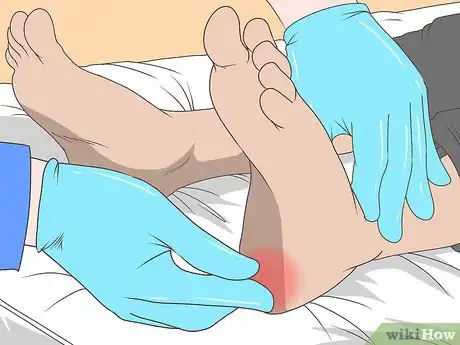
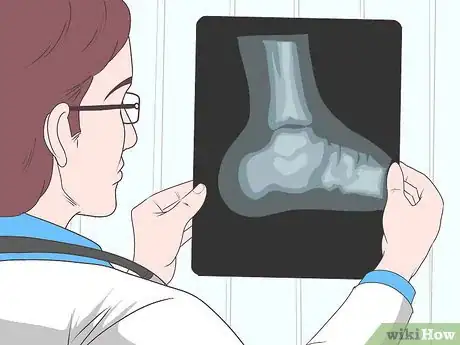
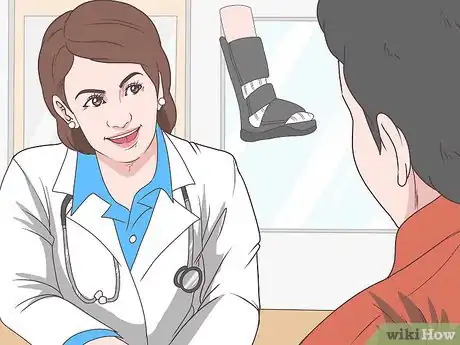



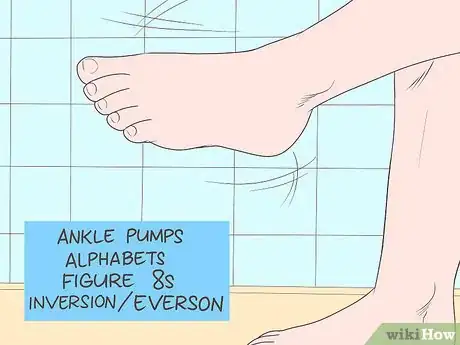
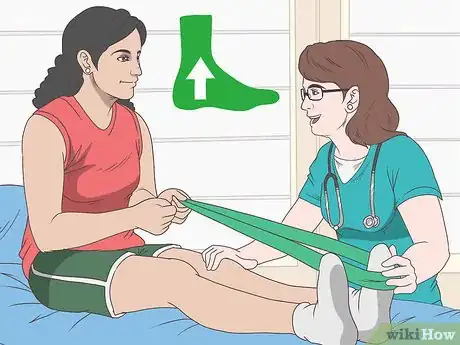



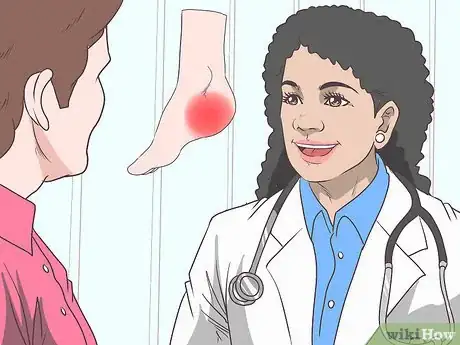
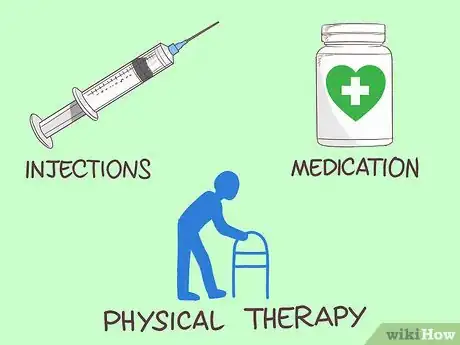

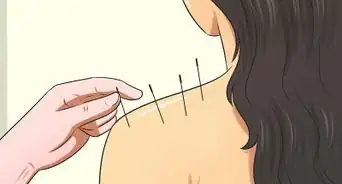


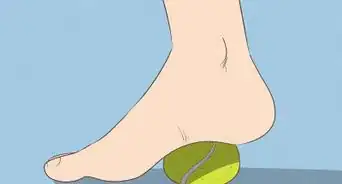




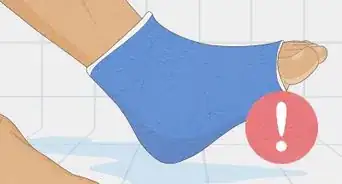

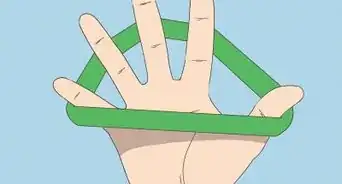

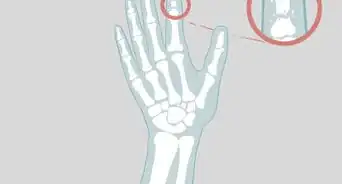










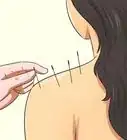


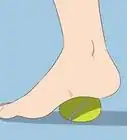



































Medical Disclaimer
The content of this article is not intended to be a substitute for professional medical advice, examination, diagnosis, or treatment. You should always contact your doctor or other qualified healthcare professional before starting, changing, or stopping any kind of health treatment.
Read More...